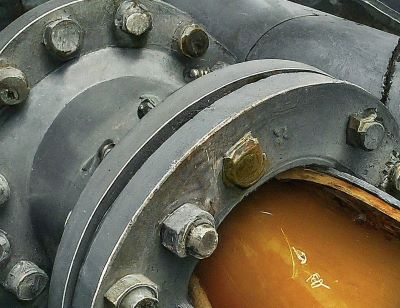Imagine a vast network of pipelines carrying fluids under immense pressure. These pipelines rely on a crucial component to ensure secure connections: the pipe flange.
Flanges are the workhorses of piping systems. They allow for connections, changes, and access for maintenance. But to ensure seamless compatibility and unwavering safety, industry standards play a vital role.
Understanding Pipe Flanges
Pipe flanges are essentially metal rings with a central hole (bore) that connect pipelines or pressure vessels. They consist of several key components:
➡️ Flange Face: The flat surface where two flanges meet to form a seal.
➡️ Neck: The portion connecting the flange face to the pipe. Different neck designs exist, such as weld neck (welded to the pipe), slip-on (slips over the pipe and welded), and threaded (screws onto the pipe).
➡️ Bore: The central hole that aligns with the pipe diameter.
➡️ Bolt Holes: Holes around the flange periphery for secure bolting between flanges.
Flange types vary based on neck design, each offering advantages for specific applications. Weld neck flanges provide superior strength and are ideal for high-pressure systems. Slip-on flanges are easier to install but may have limitations in pressure handling. Threaded flanges are suitable for lower-pressure applications where frequent disassembly is needed.
Major Flange Standards
The world of pipe flanges operates under a language of standards, ensuring components from different manufacturers work together flawlessly. Three dominant flange standard systems have emerged globally:
➡️ ANSI/ASME (American National Standards Institute / American Society of Mechanical Engineers): Widely used in North America, these standards (like B16.5 and B16.47) define dimensional specifications, pressure-temperature ratings, and material designations for flanges.
➡️ ISO (International Organization for Standardization): Offering a global perspective, ISO standards (like ISO 1092-1) provide detailed specifications for flange dimensions, materials, and tolerances.
➡️ DIN (Deutsches Institut für Normung – German Institute for Standardization): Used mainly in Europe. DIN standards (like DIN 2501) cover flange sizes, materials, and pressure ratings. They have some differences from ANSI/ASME.
Key Elements of Flange Standards
These industry standards focus on critical aspects. They ensure safe, reliable piping.
➡️ Dimensional specifications: Standards dictate flange diameter, thickness, and bolt hole patterns for consistent connections. Imagine a puzzle – standardized dimensions ensure all the pieces fit together perfectly.
➡️ Material designations: The standards specify suitable materials for flanges based on the application. Carbon steel is common. But, for high-pressure or corrosive places, stainless steel or special alloys might be needed.
➡️ Pressure-temperature ratings: Flange standards define the maximum pressure and temperature a flange can handle. This ensures safe operation within the system’s operating limits.
Benefits of Standardized Flanges
By adhering to industry standards, pipe flange users reap several advantages:
➡️ Compatibility: Standardized flanges from different manufacturers can be confidently mixed and matched, simplifying procurement and project execution.
➡️ Simplified Design and Procurement: Engineers can readily specify flanges based on standard codes, streamlining the design process and reducing the risk of errors.
➡️ Enhanced Safety and Reliability: Adherence to standards ensures flanges meet specific pressure and temperature requirements, leading to safer and more reliable piping systems.
Choosing the Right Flange Standard
Selecting the appropriate flange standard requires careful consideration of several factors:
➡️ Application Requirements: Pressure, temperature, and the type of fluid being transported all play a role. High-pressure applications might necessitate specific standards like ANSI/ASME B16.47.
➡️ Matching Existing Piping Systems: If integrating with existing flanges, you’ll need to match the existing standard to ensure compatibility.
➡️ Consulting Engineering Codes and Regulations: Specific industries or locations might have additional regulations dictating flange standards for compliance.
Additional Considerations
The dominant players are ANSI/ASME, ISO, and DIN. But, other notable flange standards exist. For example, JIS (Japanese Industrial Standards) and GB (China National Standards). Flanges often come with markings indicating the standard they adhere to, aiding in identification.
Conclusion
Industry standards are the unsung heroes of pipe line flanges. They ensure compatibility and simplify design. Most importantly, they add to the safety and reliability of piping systems.
By understanding these standards and picking the right flange for the job. You can ensure your pipelines run smoothly and well for years to come.
Post time: Jun-21-2024


